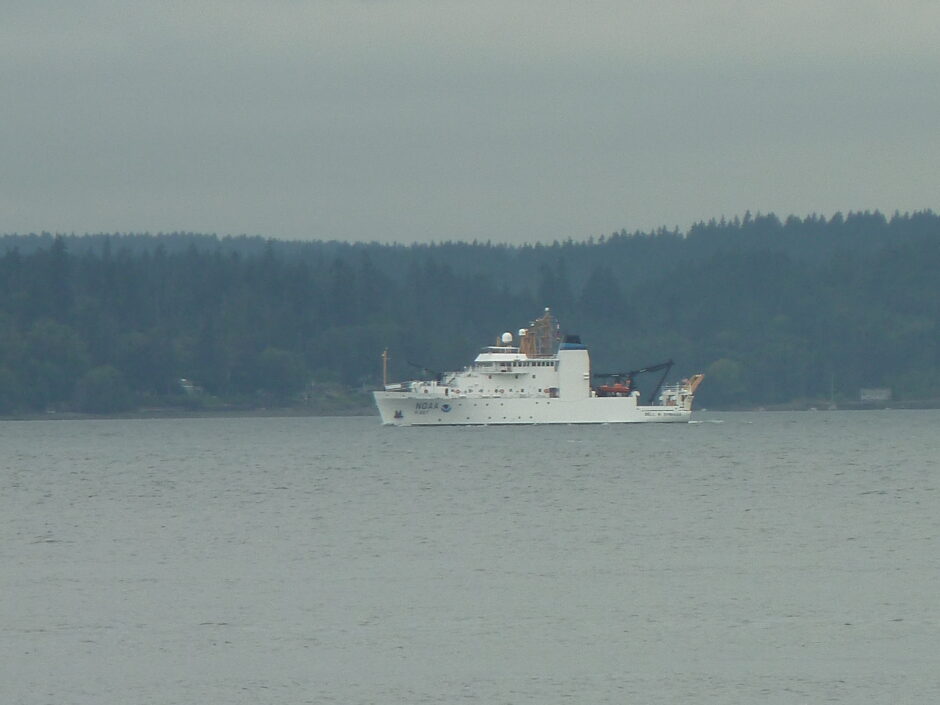NOAA Fisheries’ Annual Review Reveals a Continuous Decline in Overfishing
 NOAA Ship Bell M. Shimada (Credit: Rus Walker via Flickr CC BY 2.0)
NOAA Ship Bell M. Shimada (Credit: Rus Walker via Flickr CC BY 2.0)As reliance on fisheries is on the rise in order to support humanity’s growing population and need for food resources, the sustainability of fisheries has also been called into question. After all, if these resources are supposed to last well into the future, taking care of fisheries is a necessary part of preserving these systems.
The National Oceanic and Atmospheric Administration’s (NOAA) Fisheries division conducts annual reviews of fisheries and assesses the status of various populations of fish stocks. As of the 2022 report, NOAA Fisheries manages 492 stock or stock complexes in 45 fishery management plans.
NOAA Fisheries 2022 Report Results
The goal of the report is to identify overfishing and track the improvement or decline of critical stocks in various fisheries. At the end of 2022, the report reads, “the overfishing list included 24 stocks, the overfished list included 48 stocks and 2 stocks were rebuilt.”
While those numbers may seem high, they are improvements upon last year’s results which included 26 stocks on the overfishing list and 51 on the overfished list. In terms of long-term successes, the division has rebuilt 49 stocks in total. In particular, out of the 492 stocks the division manages, each year, more and more fish are removed from the overfishing list.
While 3 species were added to the overfishing list in 2022, 5 were removed. Indicating that while some policies have been effective, there is more work to be done in order to ensure populations in fisheries throughout the continental U.S. are preserved. This also means that restoration and sustainable fishing practices are continually evolving.
“These reports help capture our shared and continued commitment to sustainable fisheries management in the U.S. as we continue to make progress in rebuilding and ending overfishing on stocks and work to increase the economic impact of our fisheries,” said Assistant Administrator for NOAA Fisheries and NOAA’s Acting Assistant Secretary for Oceans and Atmosphere, Janet Coit in a news report from NOAA Fisheries.
She continues, “They also reflect the responsibility we have to understand and mitigate the impacts of climate change on our coastal and marine resources, all while trying to build healthier and more resilient ecosystems.”
Conclusion
These systems are supported by scientists, resource managers and the anglers who fish in the environment. Scientists study fishery waters to ensure water quality conditions and habitat needs are met for native fish. Resource managers work alongside scientists to interpret results and create policies that provide anglers with the guidelines necessary to sustain the fishery habitat and populations.
Understanding how management changes and adjustments to new research, the work of organizations like NOAA and other groups dedicated to monitoring fish populations is essential to preserving this vital resource. Each year’s reports highlight not only the success of the previous year’s efforts but also underline areas for improvement.
Declines in the overfishing list reveal that policy changes and regulations led by data and sustainable management strategies are helping to restore populations and protect existing stocks. In short, the report suggests that U.S. fishery laws are creating ecological and economic sustainability, a balance necessary in order to maintain the population for future generations.



0 comments